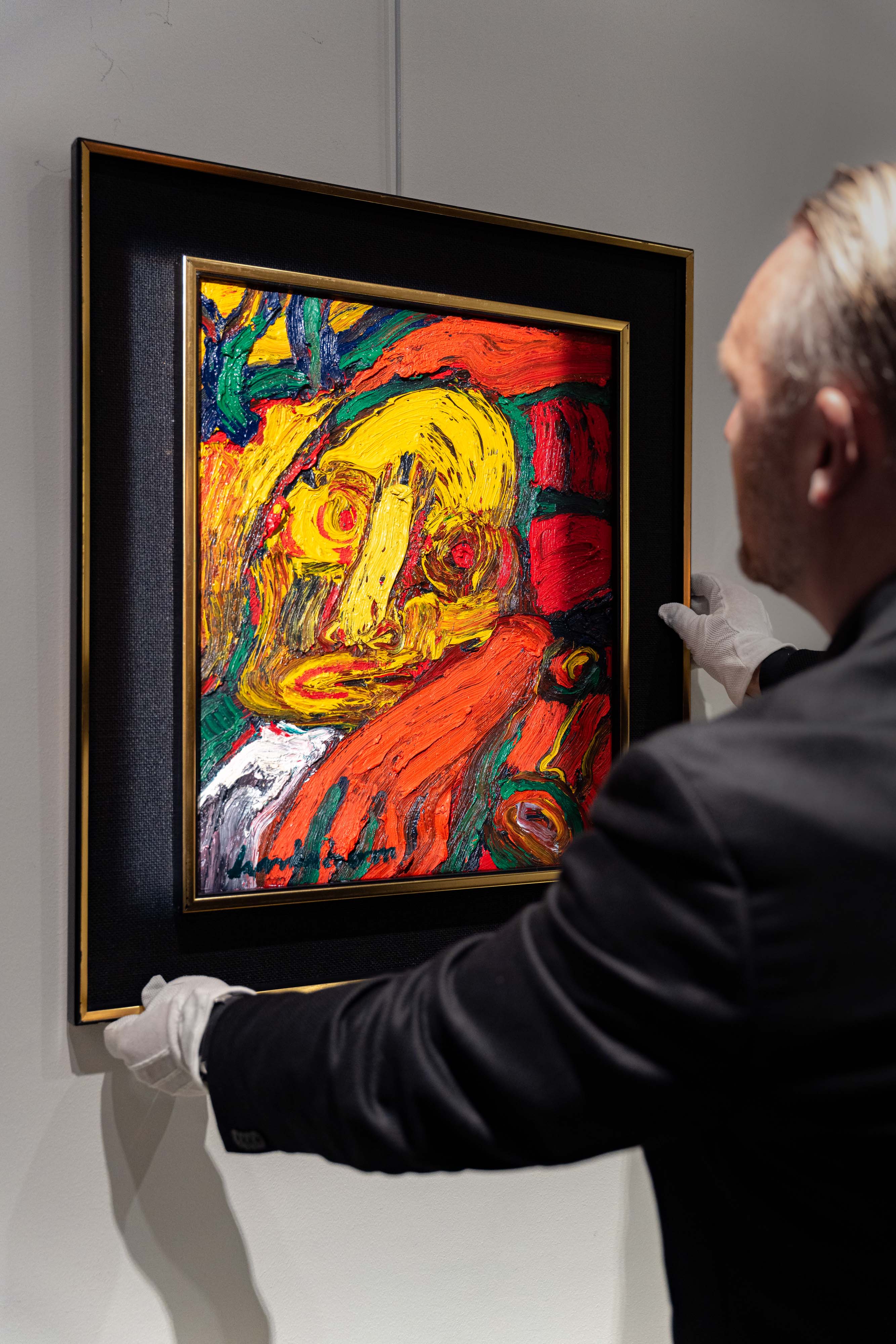Frequently Asked Questions
Fernandez Arman - Statue of Liberty
In Roman mythology, "Libertas" is the goddess of freedom and in this masterfully executed bronze statue, Arman has succeeded in bringing about a renewal of the well-known symbol of freedom. The "Statue of Liberty" outside New York was a gift to the USA from the French people and one can understand the personal significance of the statue for the artist since Arman himself moved from France to the USA in the 60s. With a proud posture and outstretched hand, the woman spreads the flame of the torch and is today one of the world's most monumental images. Here we see Arman in his essence, a timeless work that stands up for the freedom in all of us.
Fernandez Arman (1928-2005) was a French sculptor and visual artist active in France and the United States. He studied at the Ècole du Louvre in Paris. Arman belonged to the so-called "neorealists", a group created by Pierre Restany and Yves Klein m.fl. The neorealists depicted mass-produced everyday objects and integrated them into their works. Restany argues that "neorealism" observes sociological reality without any controversial intentions. This could possibly open up an understanding of Arman's work. In the late 1950s, the focus of his work shifted from traditional painting and sculpture to the "readymade" and the object itself. Readymade refers to an everyday, often mass-produced object, often called an "objet trouvé" in the art world, that an artist has selected and elevated to the status of art. Arman is best known for his sculptures depicting assemblages of objects, often musical instruments, such as saxophones and violins.
Height: 73cm
Width: 25cm
Technique: Bronze
Signed & numbered: III/XXX
FREE SHIPPING IN SWEDEN
- Normally 2-10 working days delivery time. We use forwarders such as DHL. You will receive delivery confirmation via email when the artwork leaves the warehouse.
- If a different delivery time is stated in the work description, that is the one that applies.
- When framing works, allow 2-3 weeks for the frame shop to hand-build your frame.
- For order values over half the price base amount, we will always contact you as a customer to ensure safe delivery. Please provide your phone number at checkout or contact us before ordering.
INTERNATIONAL SHIPPING
- Contact us before ordering. We deliver outside Sweden on request.
There is only one original work - and it could be yours. Continue your lifelong art journey with Galleri Melefors and help support our future Swedish cultural heritage.
The right frame for your work both protects and enhances its beauty. In Galleri Melefors' own frame workshop, we tailor your work so it fits perfectly in your home. Please indicate at checkout that you would like to be contacted about framing. & delivery and we will call you!
You can pay securely and conveniently with a card or Klarna's solutions here on the web. They offer both invoice, direct payment and financing. Do you represent a company and would like an invoice - get in touch!
-
You can easily purchase quality original art directly from our website. Select the work you are interested in and follow the instructions to complete the purchase.
-
We accept payments via card and also offer Klarna solutions, including invoice, direct payment and financing. If you represent a company and would like invoice payment, please contact us.
-
Yes, we offer free delivery within Sweden at no extra cost. The price you see is what you pay.
-
Absolutely, if you are unsure how the art will fit in your home, you can reserve a work free of charge and book a viewing in our gallery in Linköping.
-
For information about returns, please contact us directly and we will assist you with the process.
-
Delivery time may vary depending on your location and the specific artwork. We strive to deliver as quickly as possible and will provide you with an estimate at the time of purchase.
-
We currently offer free shipping within Sweden. For international deliveries, please contact us for more information.
-
The sales process takes place in three steps: we value your work, conclude an agreement based on the valuation and your wishes, and then we at Galleri Melefors handle everything related to the sale.
-
Yes, in our own frame workshop we tailor your work so that it fits perfectly in your home.
-
You can reach us by phone at (+46)13 31 14 30 or by e-mail at kontakt@melefors.com.

Johan Melefors, born 1971, founder and CEO of Galleri Melefors, grew up in a family that is the third generation in the auction and antiques industry. Already during his childhood, Johan developed an interest in art and since the early 1990s has collected and traded classic, modern and contemporary art. He started Galleri Melefors in Linköping in 2013 when he moved home from Stockholm to his birthplace of Linköping, which he felt lacked an art store and gallery with a breadth of established collector's art and a well-thought-out and future-oriented contemporary catalog to display.

Our Frame Shop
The right frame for your work both protects and enhances its beauty. In Galleri Melefors' own frame workshop, we tailor your work so it fits perfectly in your home.
Please indicate at checkout that you would like to be contacted about framing. & delivery and we will call you!
Artists
At Galleri Melefors you will find a broad catalog of works from over a hundred...
Contemporary Artwork
Find your next work of art among contemporary talents.
Classical Artworks
Find your next work of art here among the old masters.
All Artworks
Here you will find all our original works, paintings and drawings for sale at Galleri...





Do you have a question? Contact us
Do you have questions about our artwork, orders or need advice? We are happy to help you!











